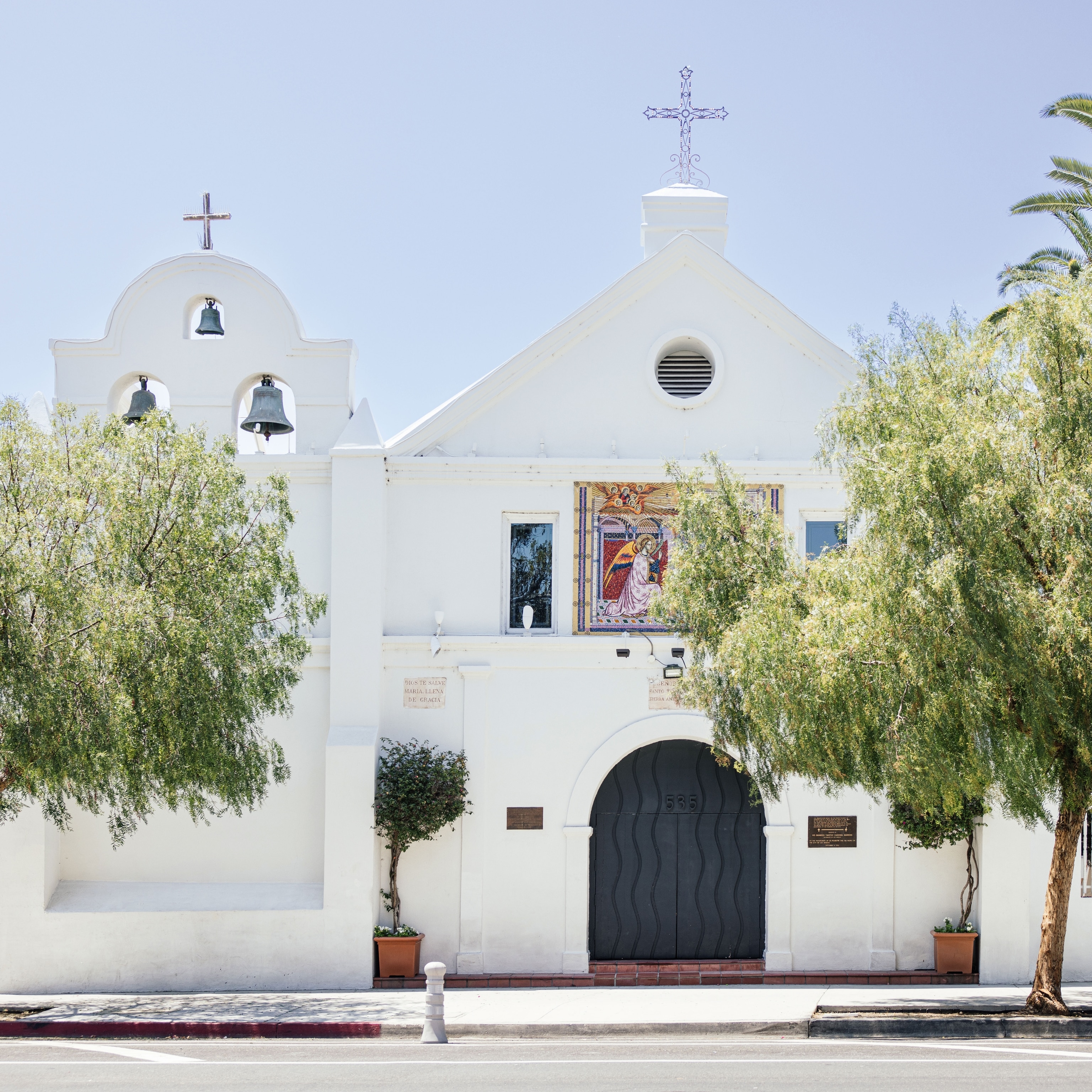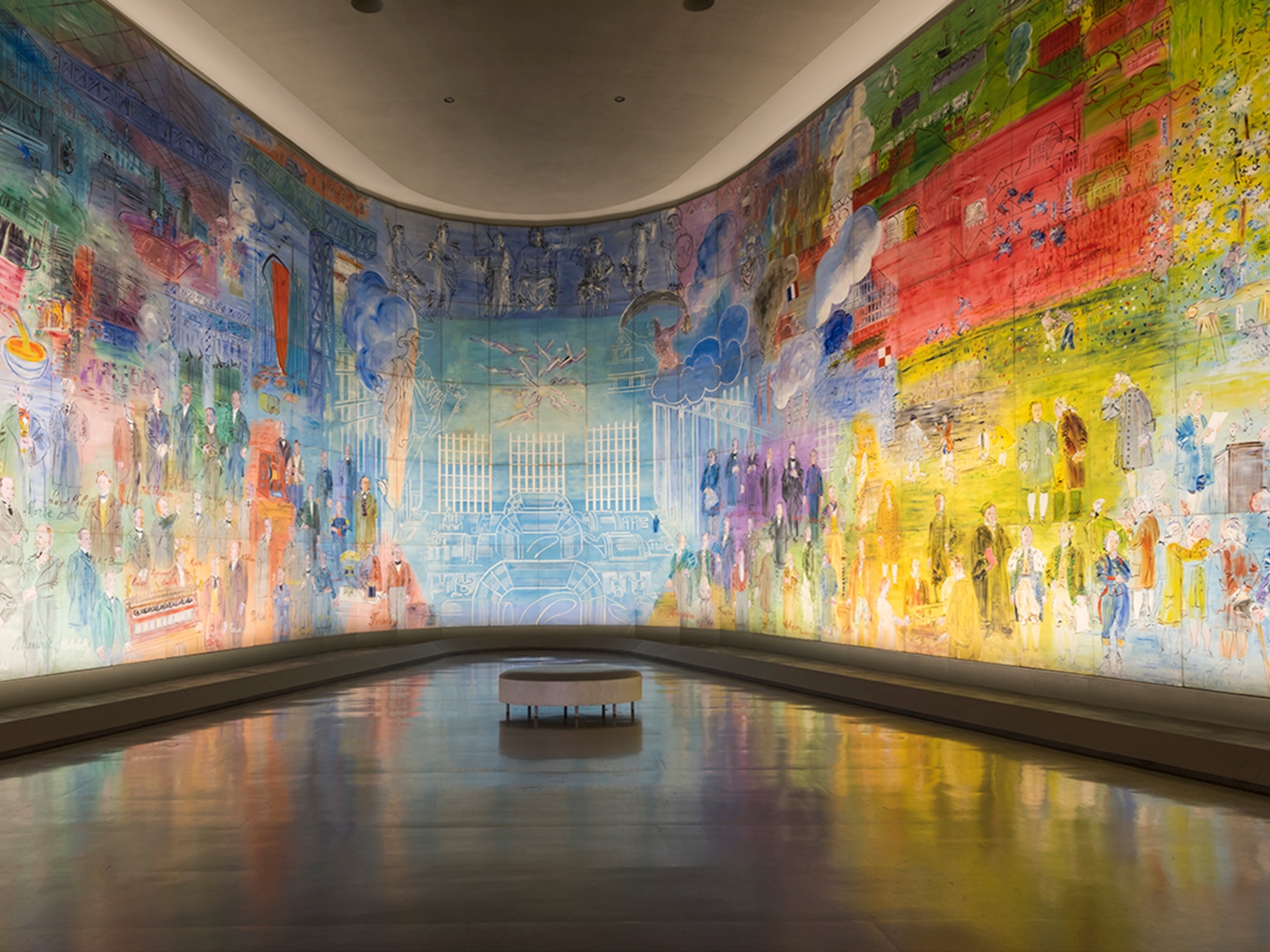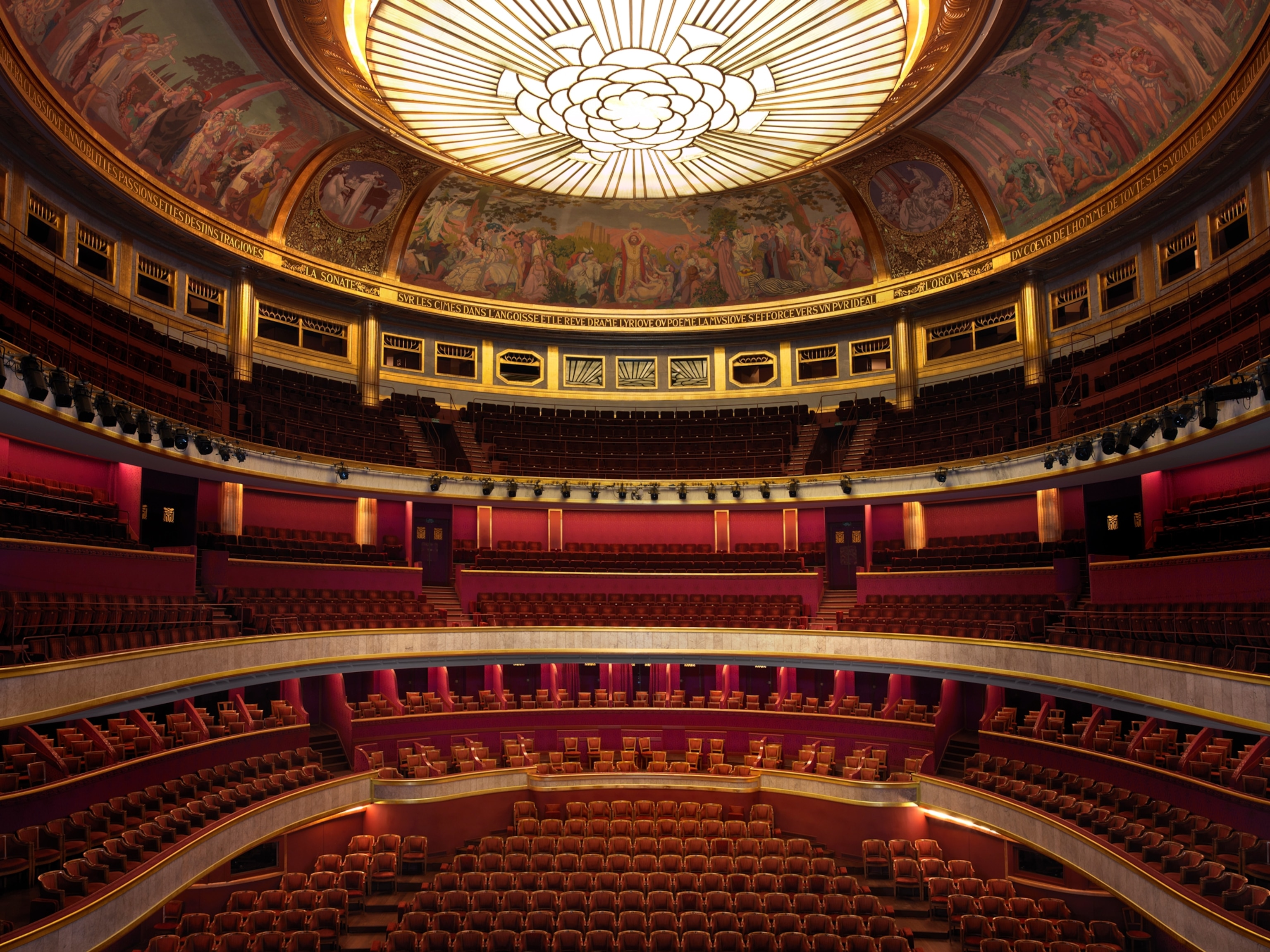
A brush with the divine: discovering Bali's identity through art
Thinking about planning a trip to Bali or simply hoping to bone up on your knowledge about the Indonesian island province? Pick up one of these insightful books, recommended by our travel literature expert Don George.
The lion’s eyes loom yellow through lotus leaves, pupils wildly dilated; ears rigid, alert. His fur is long and matted, but it’s the teeth I can’t take my eyes off: sharp, oversized sabres curl up from the lower jaw; a monstrous mouth that’s fixing me with a deranged grin.
“He’s a symbol of good,” says Kenyem, the artist who painted the Balinese barong — a mythical king of the spirits, part panther-lion, part shaggy dog — that stares out of a vast canvas leaning against Kenyem’s paint-splattered studio wall. Lotuses, leaves and vines spiral in concentric meditative circles from the barong’s mane towards the painting’s frame, where — at its base — a river springs to life. The evening air is heavy, petrichor-pungent from the recent storm, rainforest aromas creeping in through the gallery’s carved wooden windows. In the great tradition of Balinese art, nature and life are intertwined.
“When painting, I look for signs in nature,” continues Kenyem. “A falling leaf, a branch curling. It’s a way of god, nature, telling us something,” he trails off into a shy smile. Like the barong before me, the paintings of I Nyoman Sujana Kenyem (‘Kenyem’) are fertile canvasses, webbed with abstract patterns: leaves, flowers and branches often in acid hues surreal to a foreigner’s eye, endemic to this tropical corner of the world. Encircled by these vibrant nests, Kenyem’s signature tiny human forms, walking, dancing, jumping — not figures dominant over nature, but details of it.
“Balinese art goes back far before the commercial, to the sacred,” says Kenyem. “When art wasn’t to sell, but for the gods. My father did this. He was a temple sculptor.” Born in this small village near Sayan, in the rainforest-dense district of Ubud, Kenyem has painted since he was a boy. Adapting the traditions of temple art into something unrecognisable, his work is still somehow devotional, and deeply rooted in place.
“This one’s called Holy Water,” he says nodding to his barong painting-in-progress. “The springs are in the village, where water is taken for ceremonies. Bali’s spirit is very strong for me. When I exhibit in Jakarta, it’s so busy, so crowded and I can’t paint. My heart isn’t free. I need to be quiet. I can always sense Bali; I have to come home.”
Outside, the sky is bruising purple. Rain is returning. Accepting a lift, I pick my way over a carpet of frangipani flowers that have been ripped from trees in the rising wind, and hop onto Kenyem’s moped. Juddering over potholed, cobbled lanes as we wind through the village, roosters take a noisy sunset stand on pagoda shrines. These structures populate courtyard gardens of traditional walled houses. I balance precariously pillion, oversized hotel umbrella flailing madly in one hand, feeling quite the colonial clown; a sight Bali is surely well accustomed to.

Long before Eat Pray Love turned this Indonesian island into a set-jetting circus of spirituality, Europeans were making pilgrimages to Bali in the 1920s and 1930s. They were drawn in by its Eastern promise of tiered rice paddies, rustic villages and visual arts that narrated a heady blend of Hindu, Buddhist and ancient animist lore.
Invited by Balinese royals, such artist-patrons as Dutchman Rudolf Bonnet and German Walter Spies put the jungly uplands of Ubud on the map as an oasis of art, shifting themes from religious to everyday subjects, albeit with a firm Orientalist focus. I find one of Bonnet’s distinctive paintings — a sensual portrait from 1936 of a Balinese king, semi-dressed in ceremonial garb — not in an art gallery, but displayed on the walls of a hotel set among banana leaves and sandalwood trees in the rainforest just north of Sayan.
A small collection of 1930s Balinese art, part of the eccentric creative vision of hotel designer Bill Bensley and local hotelier-art collector Suwito Gunawan, adorns the canvas walls of Capella Ubud luxury tented jungle camp. Not a tree was felled for this new higgledy-piggledy hillside construction, where rocky Flintstones-esque plunge pools hover over the Ayung River’s vast gorge. The mix-not-match aesthetic combines floral Cath Kidston-style interiors with campaign furniture, loos designed like carved wooden thrones and shiny brass monkeys perched in cheeky poses on tent apexes. The restaurant’s show-stopping ceiling’s huge, hand-painted frieze depicts stories from the Hindu epics, and overlooks a pool that resembles a giant tin bath.
Surrounded by such a visual cocktail it’s a wonder anyone notices Bonnet’s work lurking in a lounge behind reception. But Bali doesn’t lack prominent art galleries. Palatial institutions populate both Ubud and its surrounding jungly reaches, where I find more of Bonnet’s work, including his signature, romanticised portraits of noble peasants and ceremonial dancers, in the venerable Neka, Agung Rai and Puri Lukisan museums. The latter was founded by Bonnet himself at the behest of a local prince; all offer a compelling crash-course in the history of Balinese arts — from the highly detailed Kamasan paintings of the 16th century, richly interlaced with winged monkey gods and handsome elephants, to the modern, rounded nudes of I Gusti Nyoman Lempad, Bali’s native modernist maestro.

Out of the frame
Balinese art also thrives beyond museum walls. As part of the Artist Trails experience curated by Carrier, I follow a sky-scraping mountain ridge just north of Capella, passing pendulous ceremonial penjor (decorative bamboo poles) nodding giraffe-like in the breeze. They signal it’s wedding season, according to Bali’s 210-day Pawukon calendar.
Arriving at Keliki village, I adjust my focus from the towering to the tiny. Hunched over a table, in the open-fronted pavilion of the I Wayan Gama Art School, ebony blocks of Chinese ink to hand, three young boys work on detailed paintings the size of an envelope. They’re sweating and it’s not just the humidity. The youngest, aged just 10, painstakingly outlines the shape of tropical birds no bigger than rice grains; the 12-year-old shades a lotus-levitating Ganesh, while a diligent teen colours the smouldering volcanic peak of Bali’s iconic Mount Agung.
I spot what looks like a classic peasants-in-the-rice-paddy scene, until I concentrate a little harder and see farmers not wearing traditional batik sarongs, but Nike T-shirts. In a coastal landscape, Caucasian bathers spill out of bikinis you could fit on a pencil tip and pea-sized aeroplanes disgorge luggage-trailing tourists.
“Keliki style began in the 1970s with classic scenes of pastoral life and Hindu stories, but it had to adapt to be relevant to life in Bali now,” says Gama, the young artist-founder of the school. This impressive non-profit is keeping Keliki painting alive — it’s tutored countless local children and is among a thriving community of traditional wood-carvers, mask makers and sculptors.
Traditionally, Bali’s artists are polymaths of music, dance and fine arts; painting as a standalone form, largely a European import, has been transformed since the 1930s from folksy depictions to abstract and conceptual works. Yet the island’s contemporary artists are often still magnificently multidisciplinary.
“His styles and interests changed so rapidly — every four or five years,” says Buratwangi (‘Bee’), of her father I Made Wianta, the septuagenarian maverick widely considered Bali’s contemporary art pioneer. “If he wasn’t an artist, he’d be a librarian,” she jokes, as we tour Wianta’s archive in the basement studio of the family’s home in Denpasar.
Tens of thousands of densely patterned sketches, bold-stroke abstract paintings, set-designs for theatre productions and poems line floor-to-ceiling shelves. Parking tickets and ripped newspaper are as numerous as canvas — Wianta works with whatever’s to hand. He’s transformed fragrant plant roots into huge pieces of sculpture, car exhaust pipes into an installation. “For a while he was influenced by Japanese calligraphy,” says Bee, leafing through pages of Wianta’s energetically painted lettering. “They don’t mean anything. It’s a made-up language,” she laughs. “His mind works differently to most people’s. Truly. He sort of dances as he works. When he was in Japan, a neuroscientist became so fascinated with his method, he scanned his brain.”
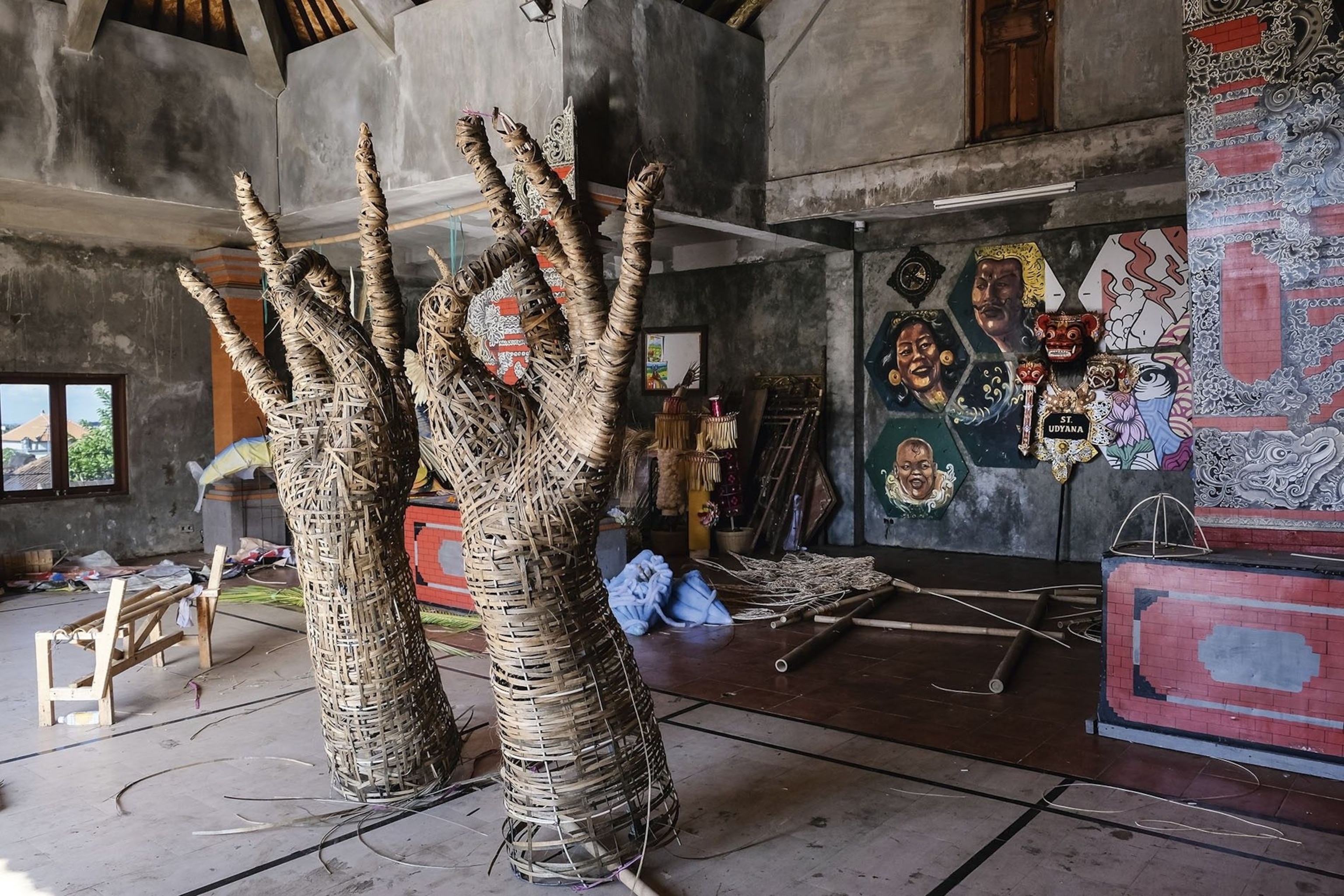
It turns out Wianta’s working mind enters a trance-like state akin to deeply meditating monks. “It’s funny,” says his wife, who’s joined us. “His family always wanted him to be a priest — yet he still ended up using his taksu.” The unique Balinese concept of charismatic spirit energy is discussed further as we crack open a bottle of local white. “It’s a recent development. Surprising, right?” smiles Bee at my positive reaction to the minerally wine.
Her father joins us, momentarily; incapacitated by a road accident a few years ago, Wianta’s activity has to be limited. “Kenyem sends his warm regards,” I say, on whose work Wianta has been a great influence. He doesn’t reply, but fixes me with the most piercing, glittering stare. His eyes are as penetrating as Kenyem’s lion god — absolutely teeming with taksu.
But it’s time to hit the beach. Or at least, the coastal town of Seminyak, where scooter jams contribute to the sunset scrum; tourists vying for oceanfront views at beach club landmarks like Ku De Ta. I put a Bali Basil Smash (gin, lychee, Asian basil) and banging tunes on hold for a while longer. I dodge the crowds at cold-brew hotspot, Revolver, where iced coffee comes in old-style glass liquor bottles, and pass a parade of indie boutiques where Balinese batik comes with international chic. Arriving at Purpa Fine Art Gallery, owner Ari Purpa welcomes me into a forest of bright canvasses.
“Java’s contemporary art scene, of course, leads the way for Indonesia, but it’s changing,” says Ari, the first woman among a patriarchal family line of gallerists. The stylistic dictates of Bali’s classical art traditions have been a cursed blessing for contemporary artists: something to both work within and also escape from. “It’s still unusual to find female artists here, but they’re definitely emerging,” says Ari.
Citra Sasmita is one one of them. She’s a contemporary artist under Purpa’s representation whose striking, often bloody biological female abstracts are daring in narrative and distinctive in style. “I want to talk about Indonesian identity,” she explains. “People say our art is very touristy. But it can be more than that. It can be about a discourse, not just money. I went to Java to study, and it felt like the land of the free.”
Born in a conservative village in western Bali, Citra began her career as an illustrator at the Bali Post. “My parents didn’t know I was an artist at first. I told them I worked in a cigarette factory,” she says.
“I don’t see myself as female artist; I’m an artist. But I get still get shouted down sometimes,” she smiles. “I’m supported by my husband, though. He’s Japanese,” says Citra, to which Ari offers a hear-hear, announcing that she herself has a French partner. “It would be tough to be a female artist married to a Balinese man,” smiles Citra. “I’m starting an arts collective for women from Bali and Indonesian islands as far as Kalimantan. Bali has such potential. We have the materials, the skills and the traditions.”
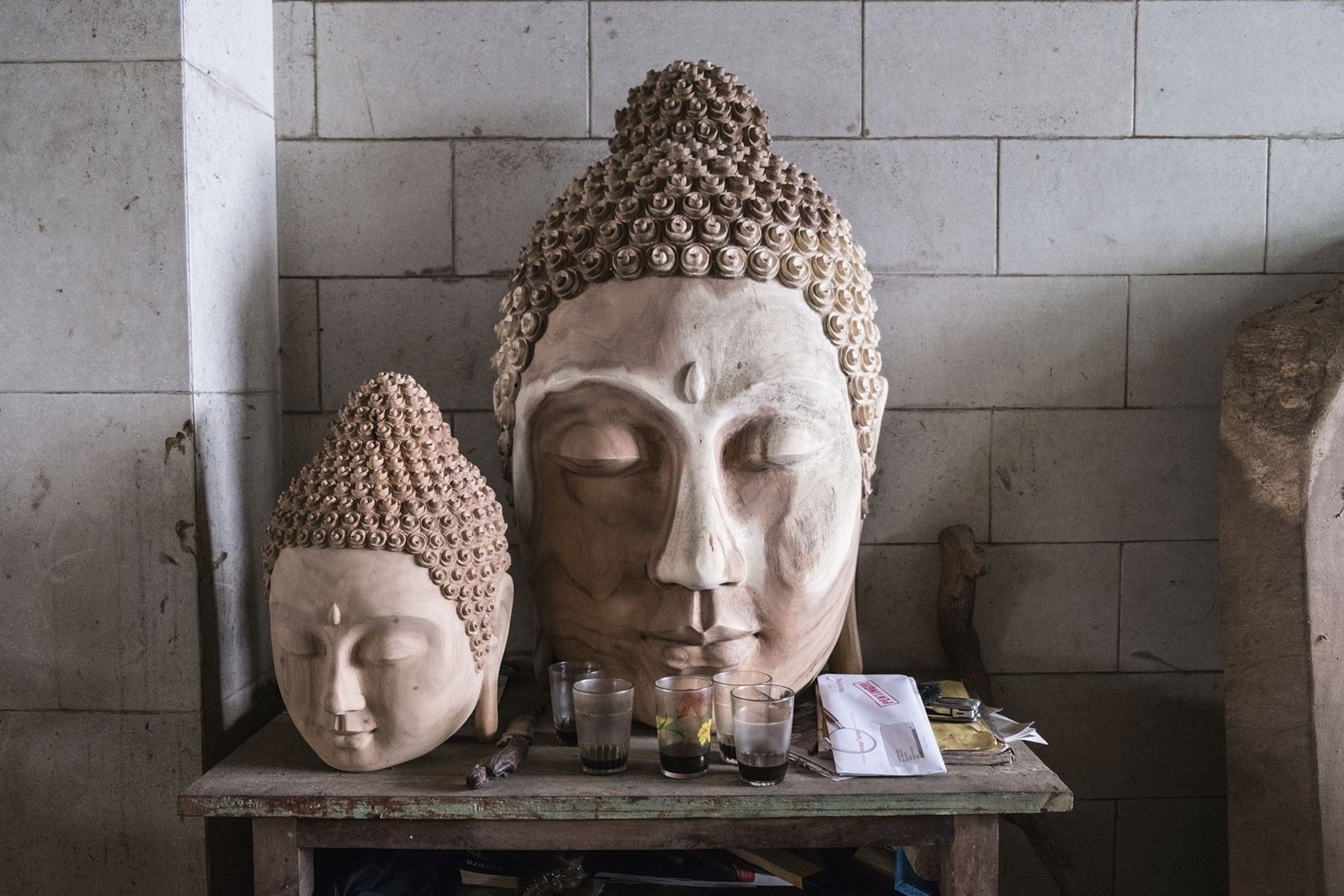
Eastern promise
Ubud might grab the spotlight as a crucible of modern art, but the traffic-snarled streets of Denpasar — a place to land in and leave for most — has become an arts incubator via such schools as the Institute of Art (ISI), and National Academy of Arts in Denpasar (STSI).
“I’ve painted since I was four years old, watching my father, learning,” says Teguh Ritma Iman. We’re in his studio on a scruffy, tree-lined Denpasar street. Scores of paintings by Iman’s esteemed artist father, Sumatran-born Roesli Hakim, line walls of the ground-floor office, while works by his teenage nascent-artist son deck the adjoining family home; upstairs Iman’s studio is doubly layered with stacked canvasses and piles of sketches.
“My father taught at STSI — we’ve inherited his teachings,” smiles Iman. Bold, bright blocks of colour unite their work, Iman’s figurative portraits the most distinctive, often featuring expressionistic fish, leaves, birds; many of women. “I see so much power in Balinese women. They have strength, but also much to give.”
Seeking the colourful low-key coastal life that often inspires Iman, I leave Denpasar. “Go east,” they all said when I asked what had become of the Bali I remembered from my first trips to the island — long before Seminyak morphed into a shopping mall and Ubud became a movie set. “Go east,” they’d responded again, when I’d asked if the Bali I saw in paintings could still be found.
So, as the artists and gallerists instructed, I head to Bali’s most easterly point, where the island’s fish-shaped form noses into Lombok Strait. Here, under the omnipresent peak of Mount Agung, I find not tranquillity but chaos. Monsters are roaming the streets: 16ft ‘ogoh-ogoh’ ogres baring blackened teeth the size of tombstones, trailing long nets of fetid hair, bulbous feet raised in a warrior pose, jiggling to the percussive hammering of an attendant kulkul band and kohl-eyed, barefoot dancers. Not strictly styled on demons of the Hindu pantheon, creepy papier-mache incarnations of Conan the Barbarian and a not-so-jolly Green Giant pass among the pagodas of Amlapura’s temple, stopping for families to take selfies. Balinese kids don’t scare easily.
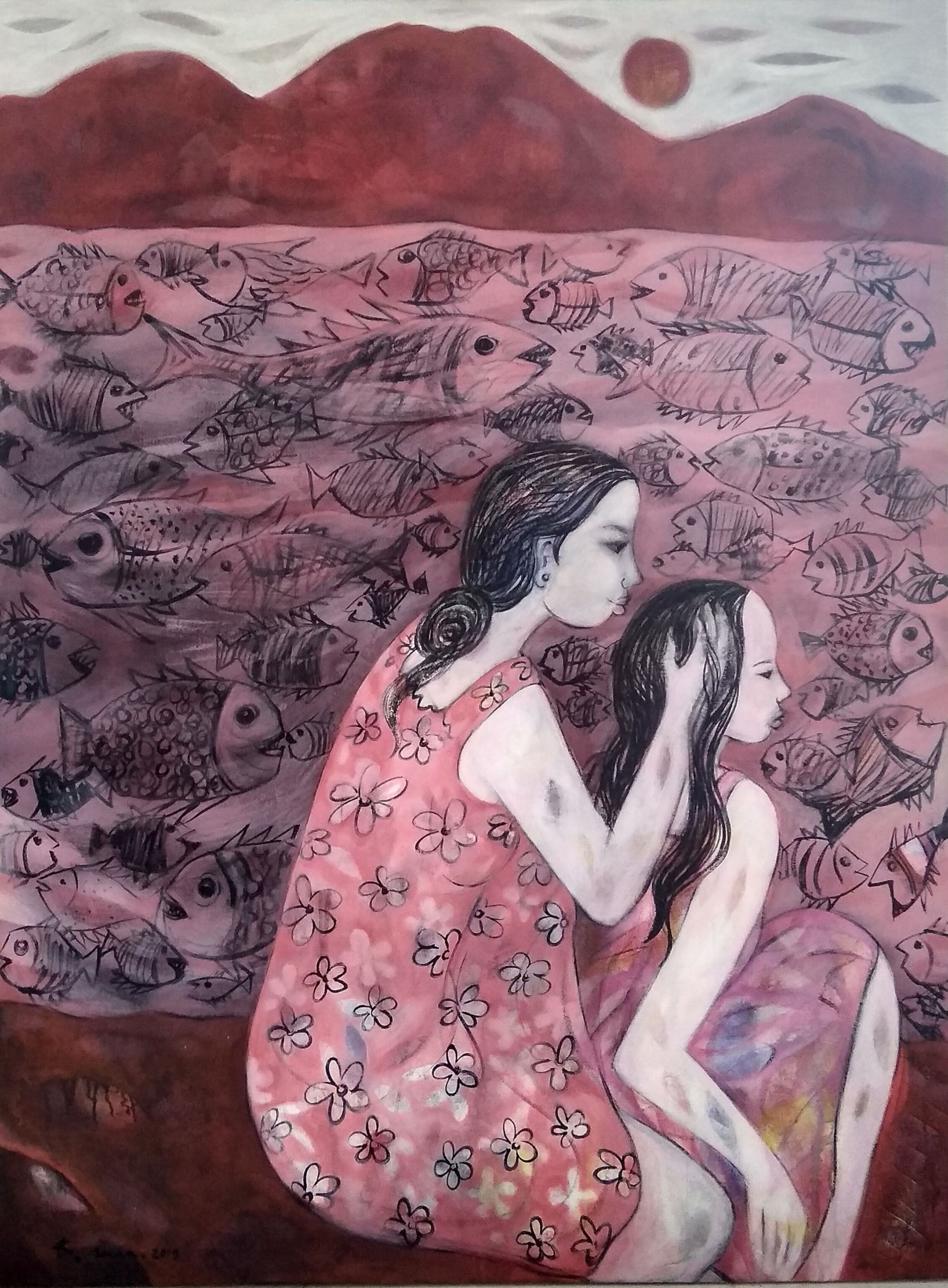
Ngrupuk — Bali’s New Year’s Eve celebrations — sees demons roused from their slumber with a monster party. Ogoh-ogoh effigies, the pride of communities island-wide, are surreal works of folk art that take months to make. I watch as these gorgons get their final touches of hair and make-up under banyan tree-shaded side streets — a drop of blood to a fang here, some backcombing of a matted beard there — before I choose a float to follow. They snake through Amlapura’s centre. The call and response of the kulkul band leads us to a temple, into which the ogoh-ogoh vanish (at least for non-Hindi), most destined to end up in a pyre of ceremonial smoke.
And then: silence. Nyepi — New Year’s Day — brings 24 hours of complete inertia and hush, boring those demons back to bed for another year. Everything shuts — airports, seaports, radio and TV stations, power grids; streets are deserted as people retreat indoors for a strictly observed day of dormancy.
In my hotel, on eastern Bali’s rice paddy-fringed shores, the only sound is of the waves raking the grainy volcanic sand. My voice lowers to an insentient whisper. By nightfall, when all lights must be extinguished or windows blackened out, I feel like I’ve stepped into one of Kenyem’s paintings — into a circular meditative silence, of sea, sky, earth — still keeping one eye open for the sabre-tooth grin of the barong.
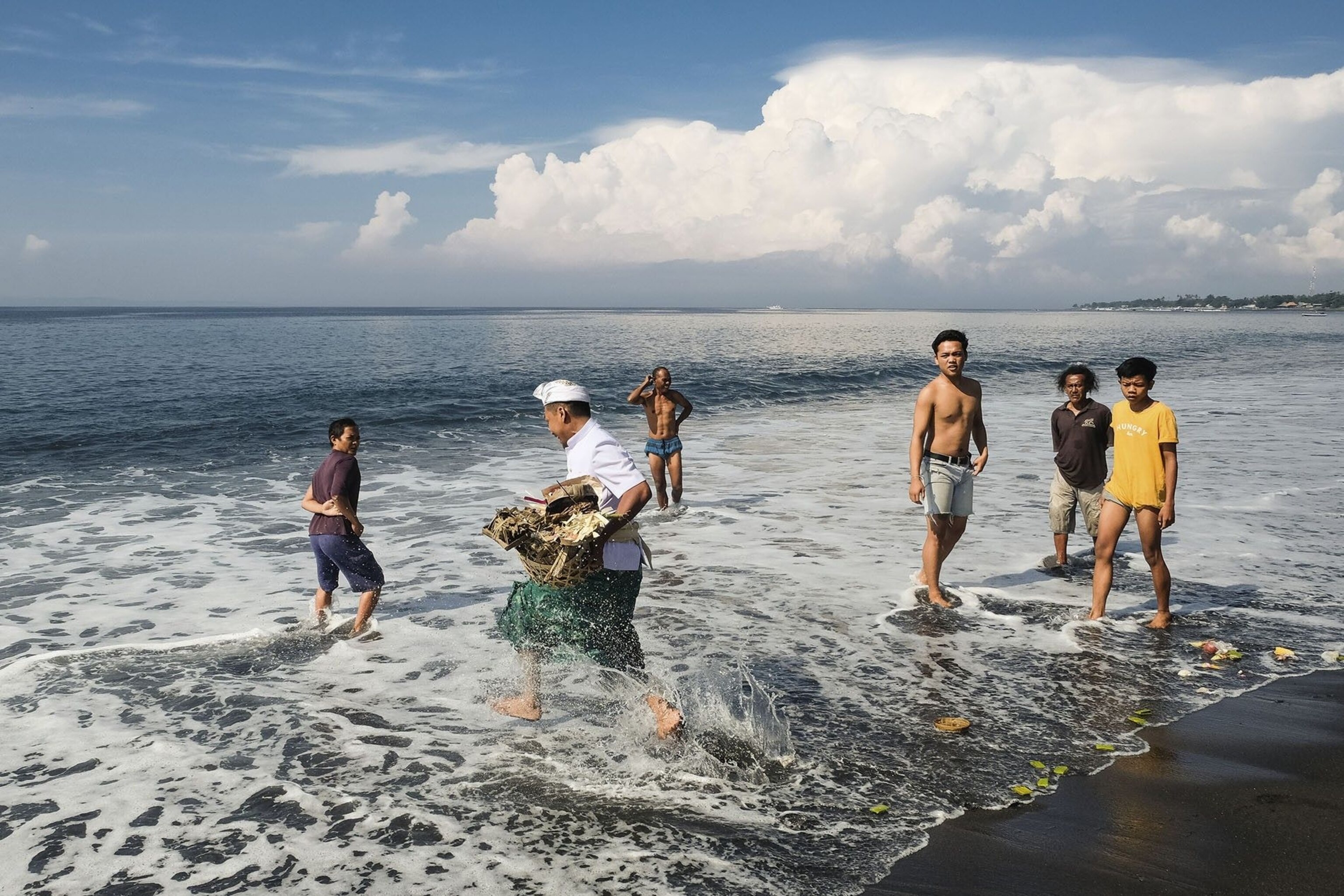
ESSENTIALS
Getting there & around
Garuda Indonesia flies non-stop from Heathrow to Bali, via Jakarta on return. Emirates, Cathay Pacific, Malaysia Airlines and Singapore Airlines also fly from the UK to Bali with connections.
Average flight time: 17h.
Car hire is available throughout Bali but taxis are an easier, more affordable way to get around. Blue Bird Taxis is considered the most reliable.
When to go
Bali’s weather is tropical year-round, ranging from 28-35C, often with daily showers. April-June and September are the best months to travel as the humidity is at its most bearable.
Where to stay
Four Seasons Resort Bali At Jimbaran Bay
Alila Manggis
Four Seasons Resort Bali At Sayan
Capella Ubud
How to do it
Carrier offers 10 nights in Bali from £4,955 per person, including three nights at Capella Ubud, two nights at Four Seasons Sayan, five nights at Four Seasons Jimbaran Bay, B&B, based on two sharing. It also includes the Artist Trails experience at Capella Ubud, return flights, private car transfers and the Fast Track Voyager service at Heathrow.
Published in the October issue of National Geographic Traveller (UK)
Follow us on social media
Twitter | Facebook | Instagram

